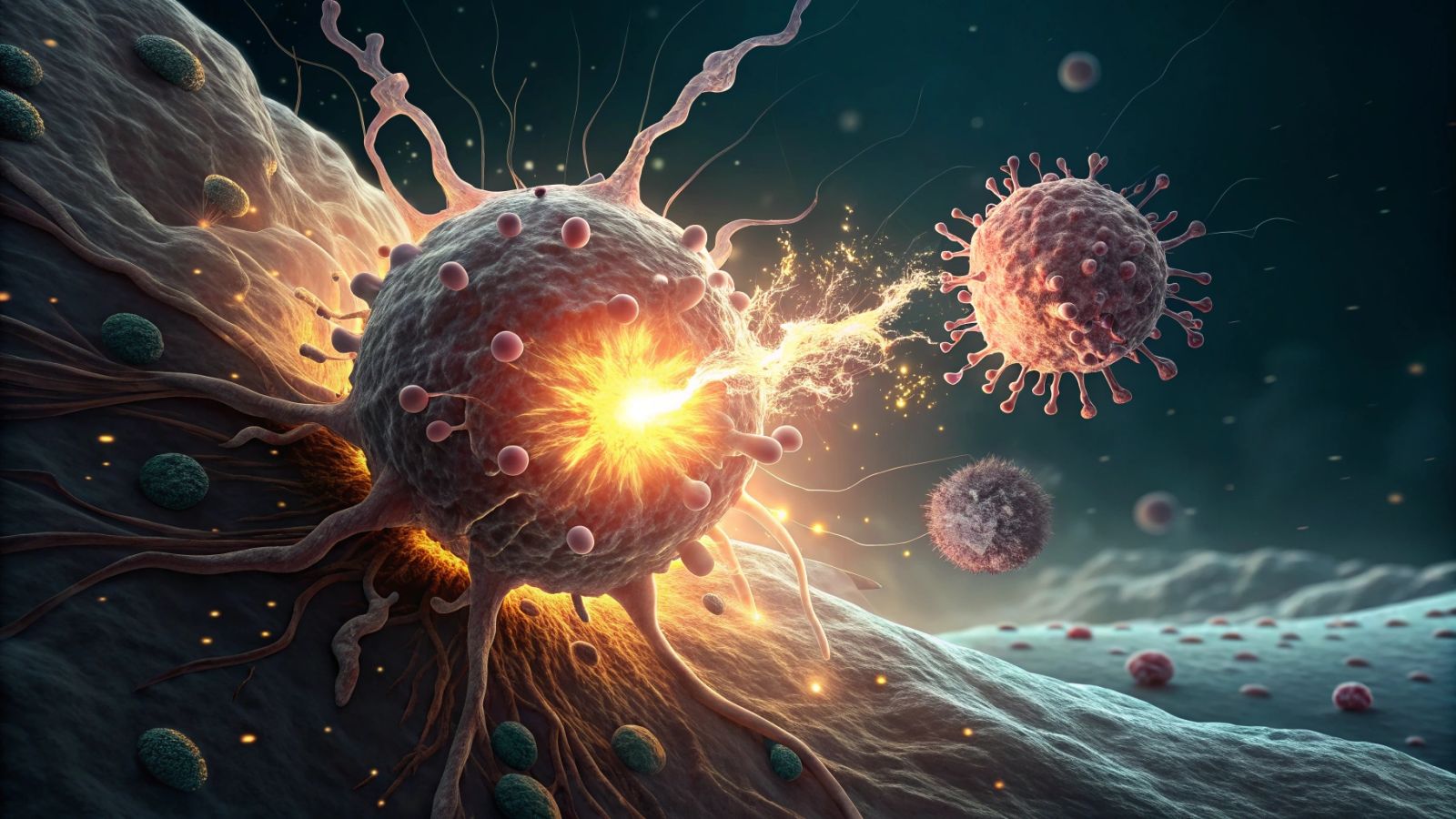A powerful new weapon against cancer proves effective (sEVs) 🎯
Follow us on Google News (click on ☆)

Researchers at the University of Pennsylvania have developed a technique using small extracellular vesicles (sEVs) to target the DR5 receptor, present on the surface of many tumor cells. Activation of this receptor triggers a self-destruction process of cancer cells, known as apoptosis. This approach has shown superior efficacy compared to antibodies targeting DR5, previously considered a cutting-edge strategy.
The sEVs, derived from natural killer (NK) cells, have demonstrated a remarkable ability to infiltrate tumors and selectively kill cancer cells expressing DR5. In murine models of melanoma, breast, and liver cancer, these vesicles significantly inhibited tumor growth and prolonged survival.
In addition to their direct action on cancer cells, sEVs also disrupted the immunosuppressive environment created by tumors. They attacked cancer-associated fibroblasts and bone marrow-derived suppressor cells, while stimulating T lymphocytes to enhance the anti-cancer immune response.
The ease of manufacturing and storing sEVs makes them a potentially accessible therapeutic option for a wide range of patients. Unlike personalized cell therapies, this method does not require harvesting cells from each patient, representing a significant advantage.
The next steps for the research team include optimizing the production process for clinical scale and conducting safety studies in preparation for human clinical trials. This promising innovation could thus offer a new weapon in the therapeutic arsenal against cancer.
What is apoptosis and why is it important in cancer treatment?
Apoptosis is a programmed cell death process, essential for maintaining tissue balance by eliminating damaged or abnormal cells. In the context of cancer, apoptosis is often deactivated, allowing cancer cells to proliferate uncontrollably.
Targeting apoptosis in cancer cells represents a promising therapeutic strategy. By reactivating this process, it is possible to force tumor cells to self-destruct, thereby reducing tumor size and preventing its spread.
Death receptors, such as DR5, play a key role in initiating apoptosis. Their activation by specific therapeutic agents can trigger a cascade of signals leading to cell death. This approach is particularly interesting because it selectively targets cancer cells, minimizing effects on healthy cells.
Recent advances in understanding the molecular mechanisms of apoptosis have opened new avenues for the development of more effective and less toxic anti-cancer treatments.
How can extracellular vesicles revolutionize cancer treatment?
Extracellular vesicles (sEVs) are tiny membrane sacs secreted by cells, playing a crucial role in intercellular communication. They transport biological molecules, such as proteins and RNA, which can influence the behavior of recipient cells.
In the field of oncology, sEVs are exploited for their ability to specifically target cancer cells. By modifying them to carry therapeutic agents, it is possible to deliver treatments directly to tumors, increasing efficacy while reducing side effects.
NK cell-derived sEVs are particularly promising. These immune cells are naturally capable of recognizing and destroying cancer cells. NK sEVs inherit this ability, while offering better tumor penetration and greater stability.
In addition to their direct role in destroying cancer cells, sEVs can modulate the tumor environment by attacking immunosuppressive cells and stimulating the immune response. This dual action makes them a powerful weapon against solid tumors, often resistant to conventional therapies.